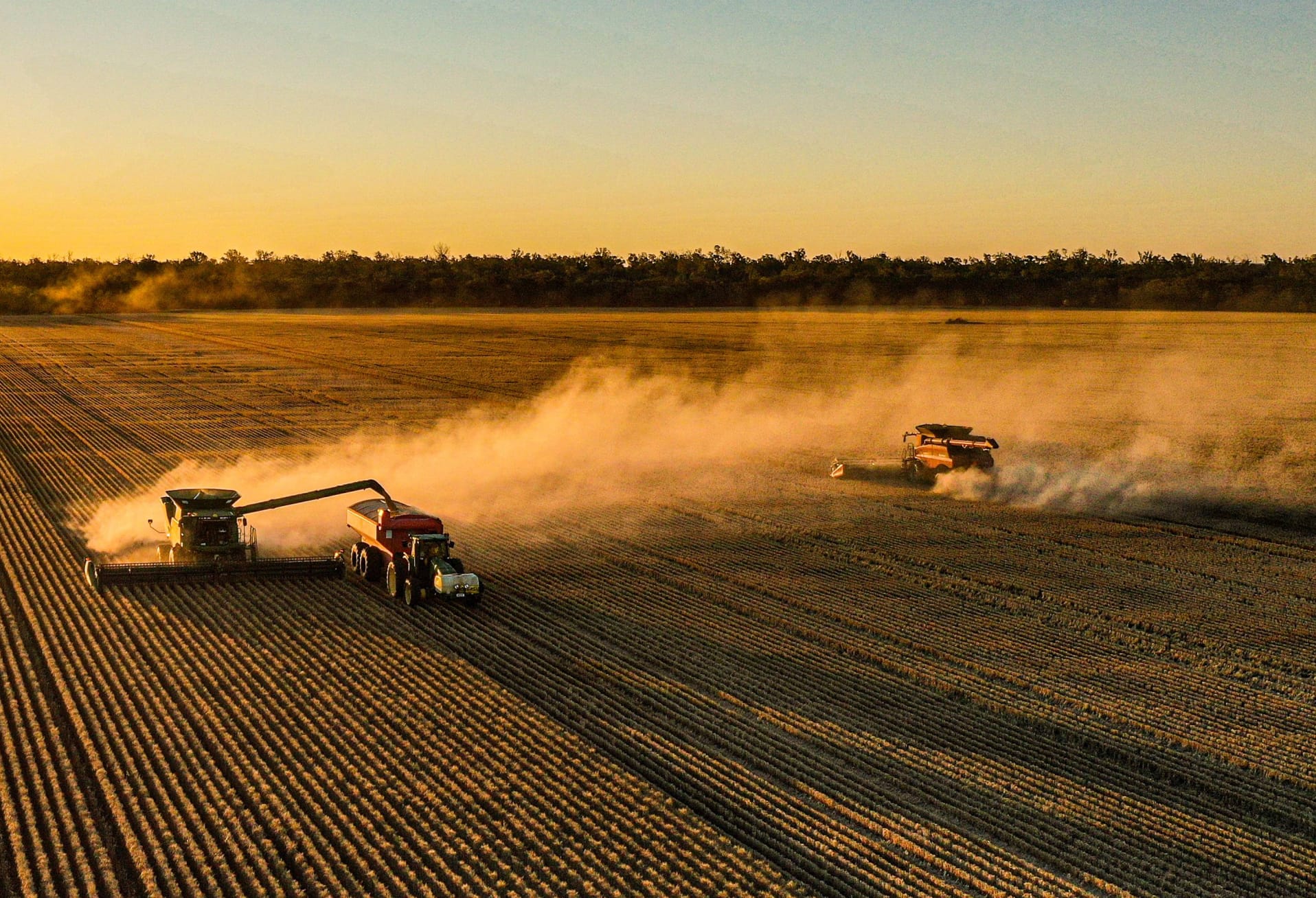Take home messages
- Spot form of net blotch (SFNB) was severe in early sown susceptible barley varieties during 2016 due to above average rainfall and abundant inoculum.
- SFNB caused 20 per cent (1.1t/ha) grain yield loss in an experiment at Curyo, but no grain quality loss.
- Seed applied Systiva® or foliar applied Prosaro® or propiconazole at GS31 and GS39 effectively suppressed SFNB and significantly increased grain yield.
Background
Spot form of net blotch (SFNB) is a common stubble-borne foliar disease of barley in south eastern Australia. Its development is favoured by early sowing, cultivation of susceptible varieties, stubble retention practices and cool, wet climatic conditions. Previous collaborative research between Agriculture Victoria and BCG has shown that SFNB can cause up to 13 per cent yield loss and significant reductions in grain plumpness during average rainfall seasons (McLean and McColl 2014) but was not an issue during dry seasons (McLean et al. 2015).
During 2016, a collaborative experiment was conducted at Curyo to investigate the effectiveness of the new seed applied fungicide Systiva® (fluxapyroxad) and commonly used foliar applied fungicides Prosaro® (prothioconazole/tebuconazole) and propiconazole for SFNB suppression and yield improvements. Foliar applied fungicides were tested at different timings and growth stages with treatments based on those shown to be effective in previous research (McLean et al. 2015).
The 2016 growing season was characterised by very wet conditions, resulting in high yields, severe disease development which were of contrast to previous seasons.
Aim
To identify effective fungicide application strategies for management of SFNB in the Mallee.
Paddock details
| Location: | Curyo |
| Annual rainfall: | 423mm |
| GSR (Apr-Oct): | 354mm |
| Soil type: | Sandy clay loam |
| Paddock history: | Vetch brown manure (cultivated) |
Trial details
| Crop type: | Rosalind barley (susceptible to SFNB) |
| Treatments: | Table 1 |
| Target plant density: | 120 plants/m² |
| Seeding equipment: | Knife points, press wheels, 30cm row spacing |
| Sowing date: | 5 May |
| Replicates: | Six |
| Harvest date: | 27 November |
| Trial average yield: | 5t/ha |
Trial inputs
| Fertiliser: | Managed to maximise yield and quality according to soil test results |
| Fungicide: | Refer to Table 1 |
Pests and weeds were controlled according to best management practice.
Method
One experiment was conducted at Curyo during 2016. The trial consisted of SFNB susceptible barley variety Rosalind which was inoculated with approximately 1kg/plot of stubble residue naturally infected with SFNB. Six replicates of nine treatments (Table 1) were tested in a completely randomised block design. Wheat buffer plots were sown between each barley row to reduce disease influence from adjacent plots.
Spot form of net blotch severity was determined by visually estimating percentage leaf area affected on four occasions: 8 July (GS31), 22 August (GS51), 7 September (GS69) and 26 September (GS85). The first assessment was of whole plants. The assessments at GS51-85 were of the top three leaves, so lower canopy infection is not represented in the results. Grain yield was determined by measuring grain weight from each plot at harvest. Grain quality measurements of protein, retention, screenings and test weight were measured post-harvest.
Table 1. Treatment applied to Rosalind barley infected with SFNB at Curyo during 2016.
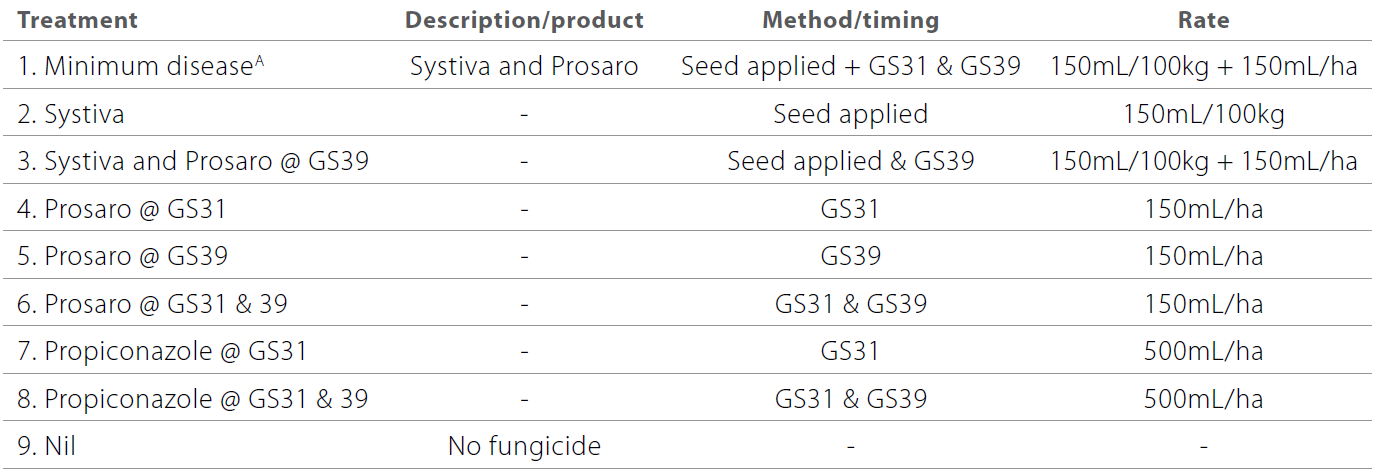
A. Growth stages: GS31 = stem elongation, GS39 = flag leaf emergence
Results and interpretation
Spot form of net blotch was severe during the tillering and crop ripening stages where no fungicide was applied. Severe SFNB development was due to the wettest growing season conditions for more than 20 years with frequent rainfall events.
SFNB caused up to 20 per cent (1.1t/ha) grain yield loss at Curyo during 2016 (Figure 1). Fungicide treatments had a significant effect on SFNB severity and grain yield. Propiconazole or Prosaro applied at GS31 and GS39 provided the greatest SFNB suppression and improvements in grain yield of 0.8t/ha (15 per cent).
The next best treatment was seed applied Systiva which reduced SFNB severity to less than two per cent leaf area infection throughout the season (Figure 2) and improved grain yield by 0.6t/ha (11 per cent). Single application treatments of foliar fungicide provided significant suppression of SFNB post application and improvements in grain yield of 0.2-0.5t/ha (4-7 per cent).
Grain yield of single foliar application treatments was significantly less than the minimum disease treatment indicating that further control was required in order to maximise grain yield. No grain quality loss was observed with approximately one per cent screenings, 97 per cent retention, 65kg/hL grain weight and approximately eight per cent protein recorded for all treatments.
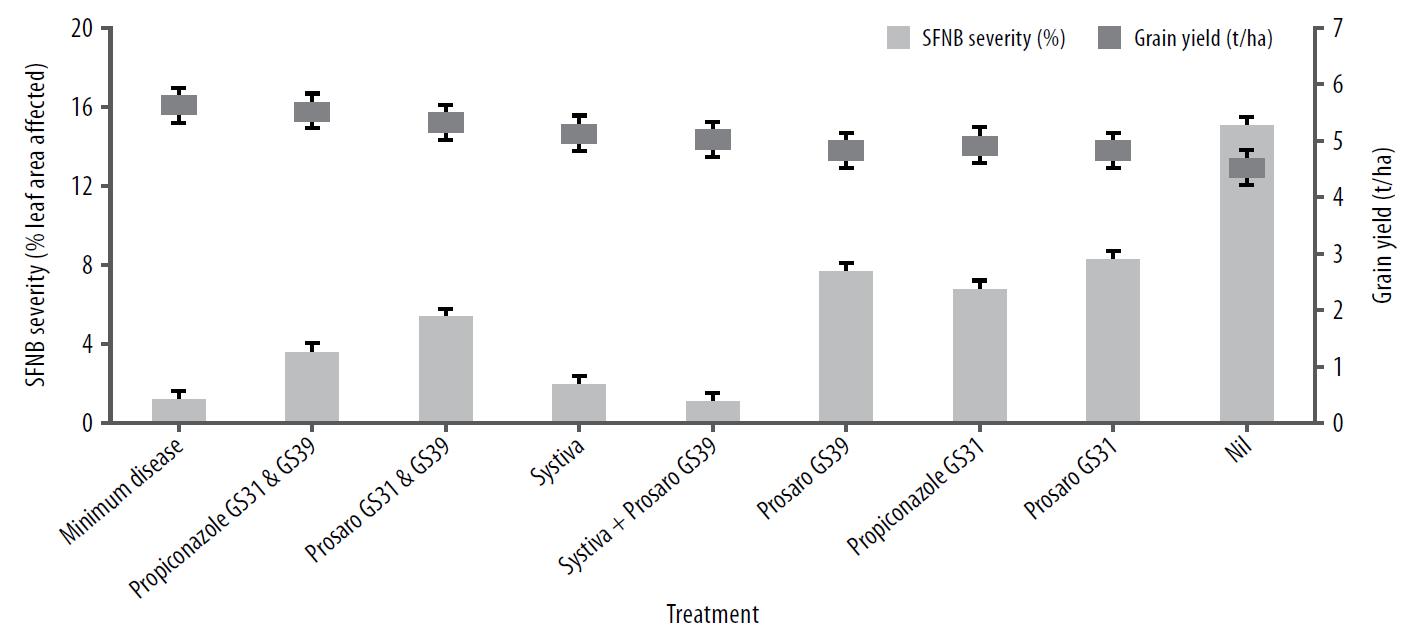
Figure 1. Spot form of net blotch severity at ripening (GS85) and grain yield of Rosalind barley in response to fungicide treatments at Curyo during 2016.
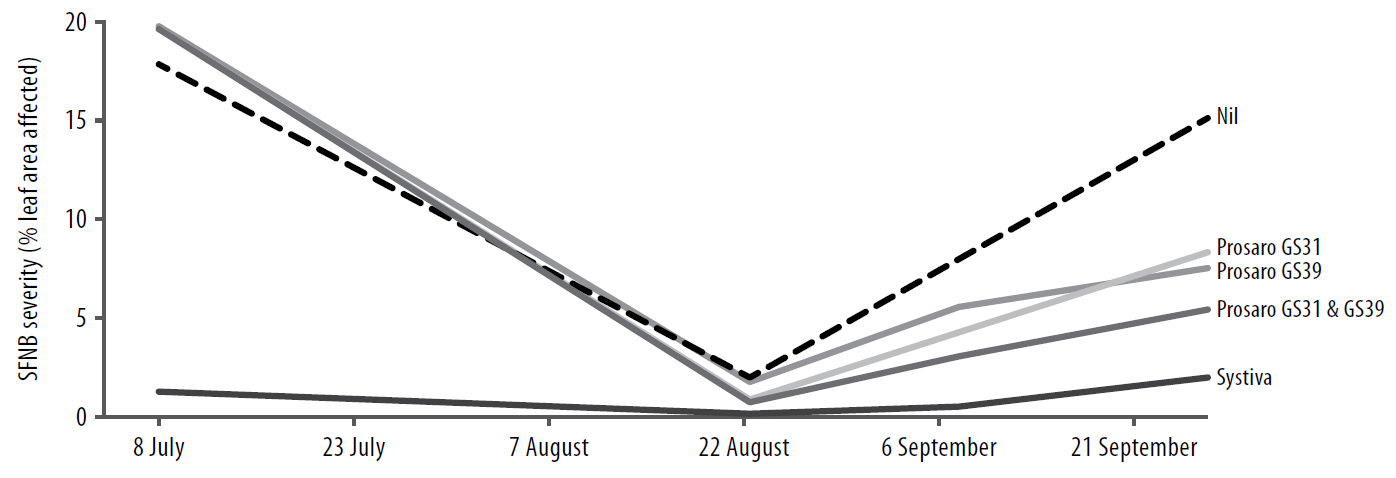
Figure 2. Spot form of net blotch severity on the upper three leaves of Rosalind barley
in response to Systiva and Prosaro fungicide treatments at Curyo during 2016.
Small differences in SFNB suppression and grain yield were observed when Prosaro and propiconazole were compared (Figure 3). Propiconazole applied at 500mL/ha provided slightly better results than Prosaro at 150mL/ha. This indicates that propiconazole can be a very economic option for SFNB management and that timing and number of foliar applications is more important than product choice.
Slightly better suppression may have been achieved if the higher rate of 300mL/ha of Prosaro was used instead of the 150mL/ha rate, however this would be less economic.
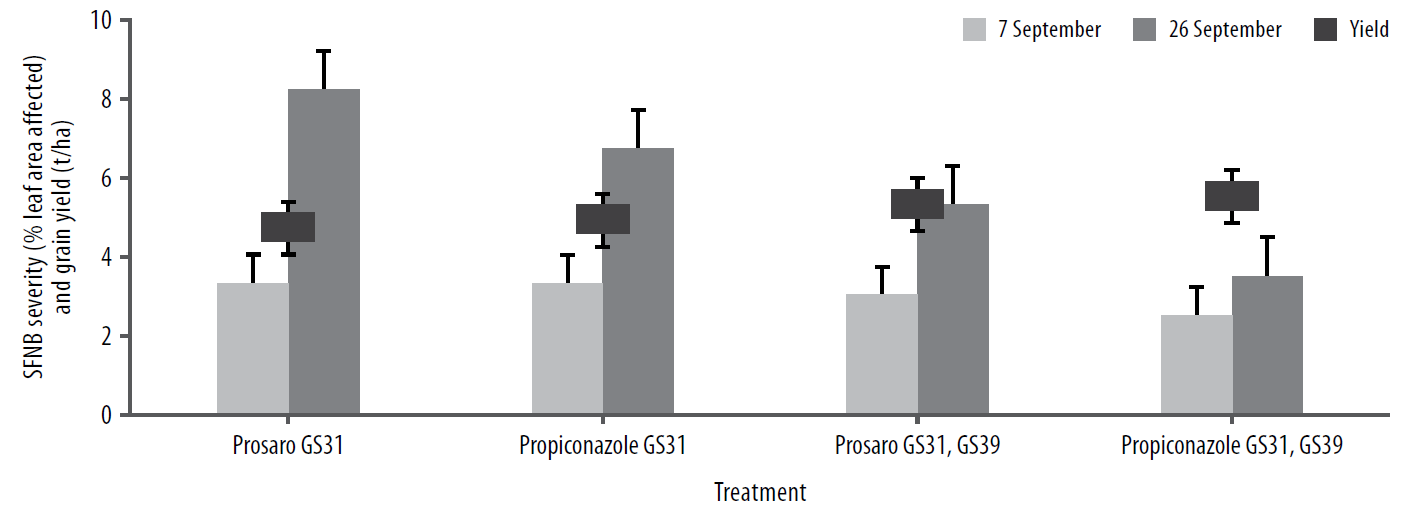
Figure 3. Spot form of net blotch severity and grain yield of Rosalind barley in response to Prosaro and propiconazole fungicide treatments at Curyo during 2016.
Commercial practice
Spot form of net blotch was an economically damaging disease of barley in the Mallee during 2016 due to the wet seasonal conditions, abundant inoculum on stubble and the cultivation of susceptible varieties such as La Trobe, Hindmarsh, Rosalind and Spartacus.
Yield loss due to SFNB was less likely in moderately susceptible varieties such as Compass and Scope. Application of fungicide at GS31 and GS39 was the best strategy for managing foliar diseases in crops with average or above average (>2.5t/ha) yield potential.
This strategy had its challenges due to wet conditions which restricted access to paddocks and highlights the benefit of applying the very effective upfront seed treatment Systiva as it eliminates the need for in-crop management at GS31.
In 2017, Systiva should be used to target high risk, susceptible crops early sown into infected barley stubble for the greatest benefit. Rotate its use with other chemical as it has an SDHI mode of action and overuse will result in fungicide insensitivity developing in pathogens of barley.
On-farm profitability
Application of foliar fungicide is generally economic where yield potential is average or above average (>2.5t/ha) and foliar disease severity is greater than 10 per cent leaf area affected.
When foliar fungicides were applied at both GS31 and GS39, results indicate economic gains of $80-110/ha ($120-150/t of barley; $30-40/ha for fungicide application). Application of foliar fungicide at GS31 was also economic with a $25-40/ha return depending on the grain/chemical price and application method.
Application of propiconazole was more economic than Prosaro as similar yield response was achieved with lower cost. Systiva was a very good option as it provided returns of $54-72 depending on barley grain price at delivery.
A proactive approach to foliar disease management in barley is the best approach and will provide the greatest economic response. Where timely fungicides were applied to barley crops during 2016, further improvements in grain yield would have been achieved through suppression of scald which was also very damaging and leaf rust which was found in some crops.
References
McLean MS, Weppler R, Howlett BJ and Hollaway GJ, 2016, ‘Spot form of net blotch suppression and yield of barley in response to fungicide application in the Wimmera region of Victoria, Australia’. Australasian Plant Pathology, 45, 37-43.
Acknowledgements
This research was supported by Agriculture Victoria with funding from the Grains Research and Development Corporation.
